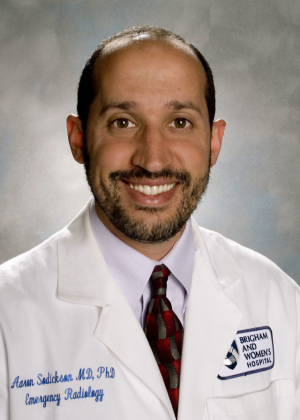by
Lauren Dubinsky, Senior Reporter | July 15, 2014
After two bombs exploded at the Boston Marathon last April, 40 wounded patients were admitted to the Brigham and Women’s Hospital Emergency Department. The hospital recently published a study in the journal Radiology assessing their emergency radiology response.
They found that in some areas they excelled, but other areas needed improvement. “We’re a group of emergency radiologists and we’re used to working in the ER on pretty sick patients and we don’t often have mass casualty events come through,” Dr. Aaron Sodickson, senior author of the study and emergency radiology director at the hospital, told DOTmed News. “We wanted to take the opportunity to take a look at how we did so that we could be as well-prepared as possible for any potential future events.”
Out of the 40 patients who were admitted to the hospital, 31 of them received imaging — there were 57 X-ray exams performed on 30 patients and 16 CT scans on seven of them.



Ad Statistics
Times Displayed: 364973
Times Visited: 6957 Quality remanufactured Certified Centrifuges at Great prices! Fully warranted and backed by a company you can trust! Call or click for a free quote today! www.Centrifugestore.com 800-457-7576
The hospital immediately brought in backup staff including attending radiologists, radiology fellows and residents and X-ray and CT technologists. They were equipped with their usual emergency imaging equipment — two portable X-ray machines, two fixed digital X-ray units, an ultrasound and a CT scanner — and brought in two extra CT scanners and additional portable X-ray units from elsewhere in the hospital.
“We were able to get patients scanned very rapidly with results back to the trauma surgeons and emergency medicine teams extremely quickly,” said Sodickson.
The researchers compared the turnaround times to perform and interpret the exams during the mass casualty event with the turnaround times for routine emergency response operations. They found that the CT exam turnaround time was shorter during the mass casualty event — 37 minutes compared to 72 minutes for routine exams.
They were able to shorten the exam time by having access to three CT scanners and putting a radiologist at each of them.
However, the X-ray turnaround time was longer than during routine exams — 52 minutes compared to 31 minutes. The researchers believed that the cause was most likely a bottleneck created by using conventional radiography portable X-ray machines with single X-ray plate readout devices.
In order to solve that, they have since replaced the portable units with digital radiography equipment with wireless image transfer.
They also ended up having a lot of duplicate orders because the physicians were ordering X-rays or CT scans on the same patients, said Sodickson. It ultimately led to some confusion, which slowed things down.

